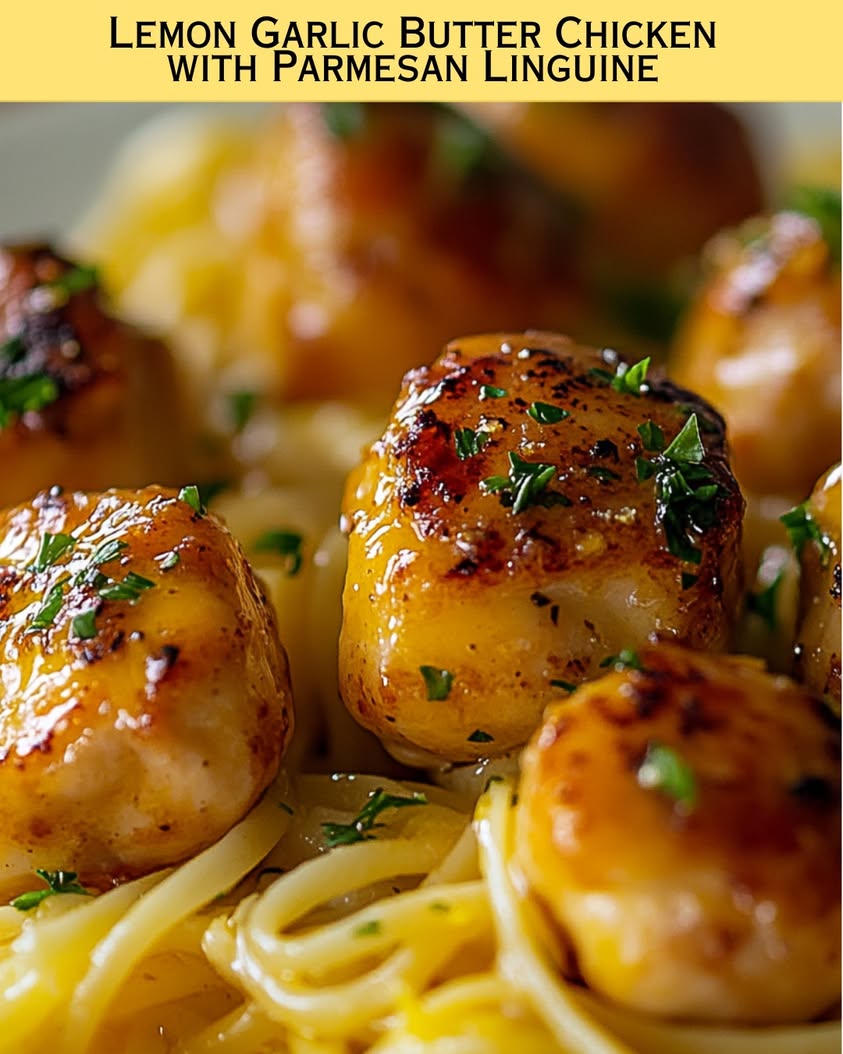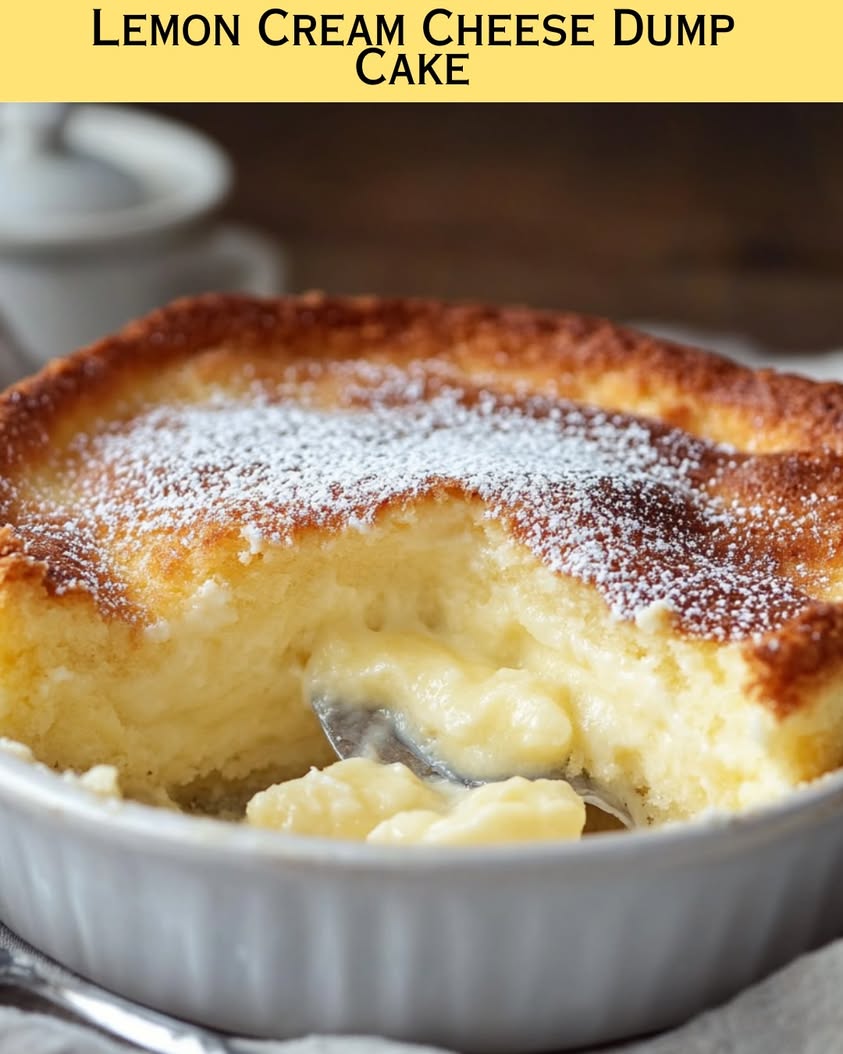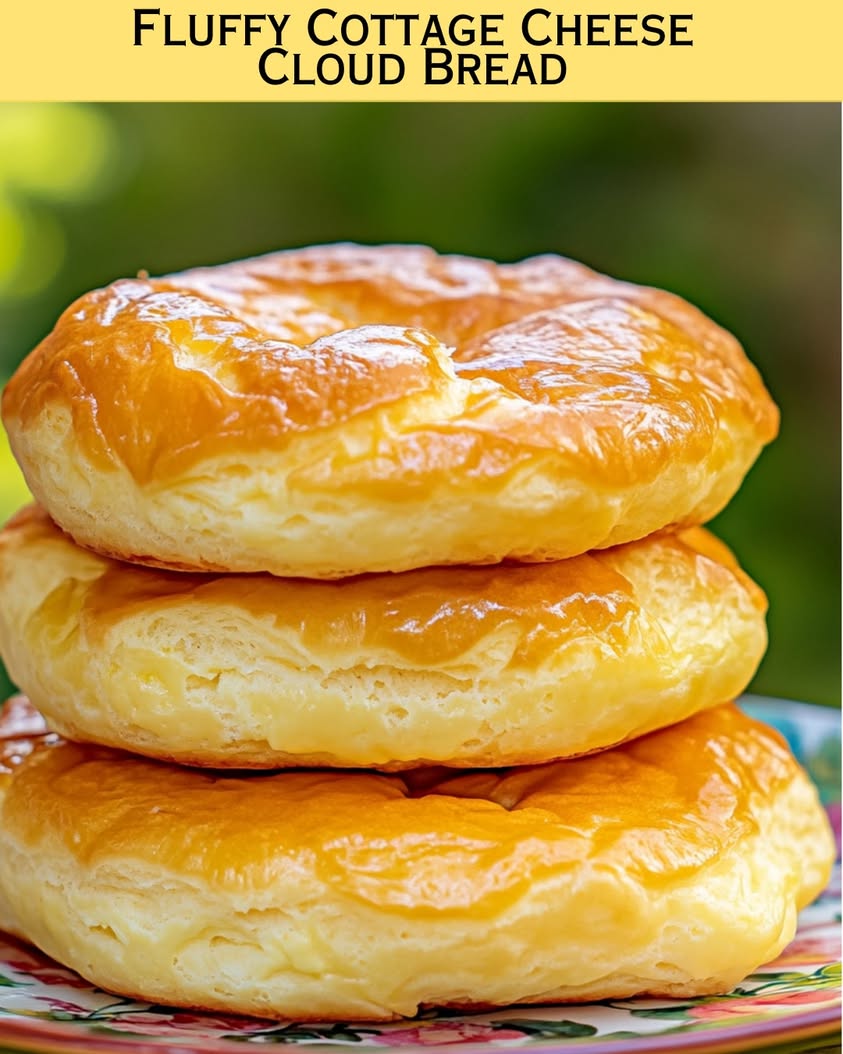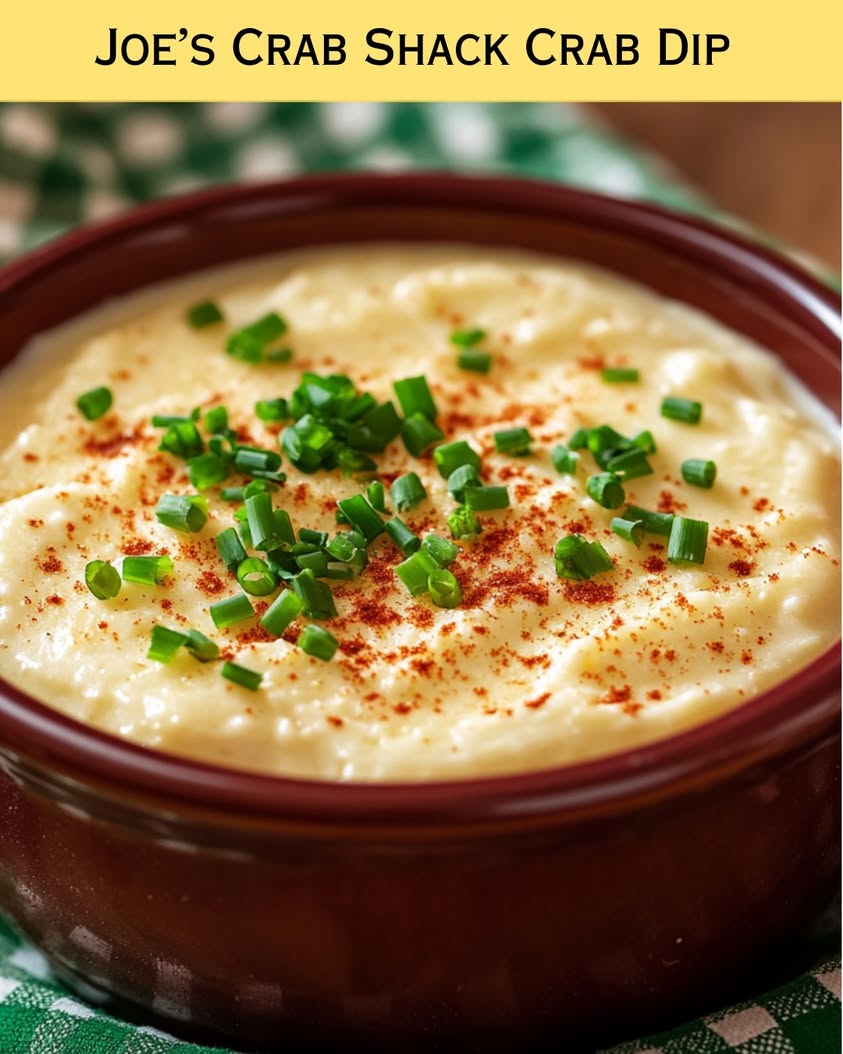Lemon Garlic Butter Chicken with Parsley: A Flavorful Delight
Lemon Garlic Butter Chicken with Parsley is a bright and scrumptious dish that perfectly combines the zesty flavor of lemon with the rich, comforting elements of butter and garlic. It’s a crowd-pleaser that not only pleases the palate but also fills the home with an inviting scent that beckons everyone to the dinner table. With easy-to-follow steps, this dish transforms ordinary chicken into an extraordinary experience. Perfect for weeknight dinners or weekend gatherings, its simplicity and flavor make it a staple in any home cook’s repertoire.
This dish features tender chicken breasts coated in a luscious lemon garlic butter sauce, garnished with fresh parsley for an added splash of color and flavor. The buttery sauce amplifies the buttery, juicy goodness of the chicken, while the garlic provides a warm, savory note that ties everything together. Your family and friends will be asking for seconds, showcasing just how delightful and satisfying home-cooked meals can be.
Quick Recipe Highlights
- Flavor Profile: The zesty lemon cuts through the richness of butter, creating a balanced flavor that excites the taste buds.
- Texture: The chicken is juicy and tender, providing a satisfying contrast to the creamy butter sauce.
- Aroma: Notes of garlic and fresh parsley mix with the bright burst of lemon, creating an irresistible aroma.
- Visual Appeal: Golden-brown chicken in a glossy sauce topped with vibrant green parsley makes for a mouthwatering presentation.
- Skill Level Needed: Ideal for beginners and seasoned cooks alike, this recipe is straightforward and quick to master.
- Special Equipment: A skillet and basic kitchen tools are all that’s needed to create this delectable dish.
Recipe Overview
- Difficulty Level: The easy nature of the recipe makes it accessible for cooks of all skill levels, while still delivering gourmet results.
- Category: This recipe falls under the main dish category, making it a perfect centerpiece for lunch or dinner.
- Cuisine: Inspired by American comfort food, it incorporates classic Italian flavors with garlic and lemon to elevate the dish.
- Cost: Budget-friendly, requiring minimal ingredients that can be found in most kitchens without a hefty price tag.
- Season: Great for all seasons, the bright lemon flavor makes it an excellent choice for spring and summer meals.
- Occasion: Perfect for family dinners, casual get-togethers, or even date nights at home.
Why You’ll Love This Recipe
The combination of taste and texture in Lemon Garlic Butter Chicken with Parsley makes it an unforgettable experience. The tender chicken soaks up all the buttery, garlicky goodness, offering each bite a burst of flavor. The refreshing lemon elevates the dish, adding a hint of acidity that brightens the overall flavor profile, ensuring a perfect balance. Additionally, using fresh parsley not only enhances the taste but also adds a visual pop of color, making the meal aesthetically pleasing as well.
Convenience abounds in this recipe, with straightforward preparation steps that require only a short amount of time. The use of simple ingredients means that you can easily whip up this dish even on a busy weeknight. The ability to make it in one pan minimizes cleanup, making it a hassle-free cooking experience. This means you can spend less time in the kitchen and more time enjoying meals with your loved ones.
From a health standpoint, this dish can be modified to fit various dietary needs without sacrificing flavor. The lean protein from the chicken is complemented by the healthy fats in the butter, creating a satisfying meal. Lemon adds vitamins and antioxidants, enhancing the dish’s nutritional value. You can serve it alongside vegetables or a salad for a complete meal that promotes balance and health.
When it comes to serving this dish, its social and entertaining potential shines. The delightful aroma and visual appeal make it a conversation starter at any gathering. Plus, its versatile nature allows for various side dishes, ensuring it pairs well with a wide range of cuisines, making it suitable for various events and gatherings.
Lastly, the cost-effectiveness of this recipe stands out. Using pantry staples combined with an affordable protein ensures that you can create delicious meals on a budget. The ingredients are readily available, and this dish can easily feed a family without being overly complicated or time-consuming.
Historical Background and Cultural Significance
The origin of Lemon Garlic Butter Chicken likely stems from the rich tradition of butter-based sauces in Mediterranean cooking. The use of butter as a cooking fat is deeply embedded in many culinary traditions around the world, praised for its flavor-enhancing capabilities. Garlic, another ingredient with a long history, has been used for centuries not only for its bold taste but also for its numerous health benefits.
Culturally, garlic and lemon are staples in various cuisines, particularly within Italian and Middle Eastern kitchens, where they are often paired to elevate dishes. These ingredients symbolize simplicity and comfort, reflecting the culinary philosophy of making the most out of a few quality components, which resonates with modern home cooks today.
Over the years, recipes for chicken in butter sauce have evolved, incorporating lemon and various herbs, reflecting changing tastes and dietary preferences. This dish captures that evolution, combining familiar flavors into a harmonious balance that’s appreciated in contemporary cooking.
Regional variations also exist, where local spices and herbs augment the classic recipe. One might find the addition of fresh herbs like basil or dill, demonstrating the flexibility of this dish and its ability to adapt to diverse palates.
Ingredient Deep Dive
Chicken Breast:
Chicken breast is the primary protein in this recipe, known for its versatility and lean quality. Historically, chicken has been a staple meat across cultures due to its availability and nutritional benefits. Rich in protein and low in fat, it’s a healthy option for various diets. When selecting chicken, look for breasts that are firm and pink without any discoloration or off odors. Store it in the refrigerator and use it within a few days or freeze for longer storage.
Lemon:
The addition of lemon not only brightens the flavor but also carries a rich history of culinary use around the world. Known for their high vitamin C levels, lemons offer both health benefits and a refreshing taste. When choosing lemons, look for ones that are heavy for their size with a bright, textured skin. Store them at room temperature for optimal juiciness. If fresh lemons aren’t available, consider using bottled lemon juice as a substitute, although fresh is always preferable for flavor.
Common Mistakes to Avoid
- Overcooking the chicken: This can lead to dry, tough meat. Use a meat thermometer to ensure the internal temperature reaches 165°F (75°C) without cooking too long.
- Neglecting to season: Insufficient seasoning can result in bland food. Ensure to season the chicken generously before cooking for maximum flavor.
- Using low-quality butter: The butter is a key flavor element. Opt for a good-quality unsalted butter for the best taste.
- Skimping on garlic: Garlic adds depth to the dish. Don’t be shy about using more; fresh garlic can elevate the flavor significantly.
- Skipping the resting period: Letting the chicken rest after cooking helps retain its juices. Skip this step, and you’ll end up with drier meat.
- Not using fresh herbs: While dried herbs can work in a pinch, fresh parsley brings brightness and flavor that dried simply can’t match.
- Cook too fast on high heat: Cooking over too high heat can cause uneven cooking and burning. Medium heat allows for consistent cooking.
- Not tasting as you go: Always taste the sauce! Adjust lemon juice, salt, or garlic to your preference for the best flavor result.
Essential Techniques
Searing Chicken:
Searing chicken is critical to developing flavor and achieving a beautiful crust. Begin with a hot skillet; this locks in moisture and creates a delightful golden-brown exterior. Avoid overcrowding the pan, as it can lower the pan temperature, leading to steaming instead of searing. Look for a rich, brown crust before flipping the chicken for perfect results.
Making a Pan Sauce:
Creating a pan sauce is essential for capturing all the flavors left in the skillet. After cooking the chicken, deglaze with lemon juice, scraping up any browned bits at the bottom. This process elevates flavors and adds depth, transforming simple drippings into a glossy sauce. Allow it to reduce slightly for a richer consistency.
Pro Tips for Perfect Lemon Garlic Butter Chicken
1. For an added punch of flavor, marinate the chicken in lemon juice and garlic for 30 minutes before cooking. This enhances the overall taste and tenderizes the meat.
2. If you want to experiment, add a pinch of red pepper flakes for a hint of heat that complements the lemon beautifully.
3. Use homemade chicken broth instead of water when deglazing the pan for an extra layer of flavor in the sauce.
4. Consider garnishing with additional herbs like thyme or oregano for a fresh herbal note.
5. For a creamier sauce, stir in a splash of heavy cream after deglazing. This creates a rich and comforting sauce.
6. Always allow leftovers to cool completely before refrigerating to maintain freshness and prevent bacterial growth.
7. Pair this dish with seasonal vegetables for a nutritious and colorful side that complements the main course.
8. Serve with crusty bread to soak up the delicious sauce, completing the meal in a delightful way.
Variations and Adaptations
For a regional variation, consider incorporating spices from different cuisines. Adding cumin and coriander can give a Middle Eastern flair, while Italian herbs can provide a Mediterranean twist. Seasonal adaptations like adding asparagus in the spring or roasted potatoes in the fall can enhance the dish’s appeal according to the seasons.
If you’re looking to cater to dietary modifications, you can substitute butter with a dairy-free alternative such as olive oil or coconut oil, making it suitable for lactose-intolerant individuals. A lemon garlic herb marinade can replace butter entirely for those on a vegan diet while still delivering the signature flavor.
For flavor variations, introducing capers or sun-dried tomatoes can enhance the dish significantly. Both ingredients will add saltiness and brightness. For texture modifications, consider adding some toasted pine nuts or slivered almonds for crunch.
Presentation alternatives include serving the chicken on a bed of spinach or kale, which wilts slightly with the warmth of the chicken. This adds color and nutritional value to your meal.
Serving and Presentation Guide
When plating your Lemon Garlic Butter Chicken, aim for a colorful presentation by adding a generous amount of sauce over the chicken. Consider using a large plate to allow the dish to breathe visually. Add a sprinkle of chopped fresh parsley not only for color but also for freshness that ties everything together.
A side of vibrant roasted vegetables or a mixed green salad will elevate the meal further. These colorful accompaniments not only taste incredible but also provide a beautiful contrast to the golden chicken.
If serving for a special occasion, consider garnishing with lemon slices or lemon zest, adding a touch of elegance and a hint of additional citrus aroma. Serving the dish hot is essential to appreciate the flavors fully and enjoy the buttery sauce at its best.
Wine and Beverage Pairing
When it comes to wine pairings, a crisp Sauvignon Blanc complements the citrus notes in the Lemon Garlic Butter Chicken beautifully. The wine’s acidity matches the brightness of the lemon, enhancing the overall dining experience. Chardonnay can also be a great option, particularly if you prefer a fuller-bodied wine.
For those seeking non-alcoholic alternatives, consider sparkling water with a slice of lemon or a refreshing iced tea. Both will cleanse the palate and amplify the meal’s flavors.
If coffee or tea are more your style, a light herbal tea can enhance the dish’s aroma. Serve it at a warm temperature to further augment the flavors enjoyed in the meal, providing a satisfying close to the dining experience.
Storage and Shelf Life
To store leftovers of your Lemon Garlic Butter Chicken, allow it to cool completely before transferring it to an airtight container. It can be kept in the refrigerator for up to three days. Ensure that the container is properly sealed to maintain moisture and prevent spoilage.
When reheating, place the chicken in a skillet over medium-low heat, adding a splash of chicken broth to avoid drying out. Cook gently until heated through. Alternatively, use a microwave safe dish, covering it loosely to retain steam and heat evenly.
For long-term storage, this dish can be frozen for up to three months. Ensure it’s in a freezer-safe container and label it with the date. To thaw, transfer to the refrigerator overnight before reheating.
Make Ahead Strategies
To save time during your busy week, consider preparing the chicken and sauce a day or two in advance. Store the sauce separately in the refrigerator, and when ready to serve, simply reheat the sauce on the stove and cook the chicken freshly for optimal flavor.
If you’re making this dish for a special occasion, marinate the chicken the night before. This enhances flavor while also allowing for quicker cooking when you’re ready to prepare.
You can also pre-chop the garlic and parsley, storing them in airtight containers to keep them fresh. This makes assembling your dish much quicker without sacrificing quality.
Scaling Instructions
For halving the recipe, reduce all ingredient amounts by half while following the same preparation and cooking steps. You may need to adjust the cooking time slightly but keep a close eye on the chicken as it cooks to avoid overcooking.
When doubling or tripling the recipe, ensure your skillet is large enough to accommodate the additional chicken, or consider cooking in batches. Timing might vary due to the increased volume, so it’s best to check the internal temperature regularly.
Lastly, when scaling up, keep in mind the space in your refrigerator or freezer for leftovers. Adjust your containers accordingly to ensure everything is stored properly for future meals.
Nutritional Deep Dive
The macro breakdown of Lemon Garlic Butter Chicken is rich in protein while being moderate in carbohydrates, making it ideal for protein-focused diets. The butter contributes healthy fats, essential for energy and satiety. Each serving provides a well-rounded meal that can support an active lifestyle.
In terms of micronutrients, chicken is a great source of B vitamins, particularly niacin and B6, vital for metabolism. The inclusion of lemon not only enhances flavor but also adds vitamin C, essential for immune function and skin health.
This dish fits well into many dietary considerations, providing advantages for those focusing on lean protein intake. Portioning is essential, as consuming larger servings may impact calorie intake, but the recipe’s flexibility allows for manageable servings without compromising on taste.
Dietary Adaptations
For gluten-free variations, this Lemon Garlic Butter Chicken is naturally gluten-free, making it suitable for anyone on a gluten-free diet. Always ensure that any sides served with it are also free from gluten to avoid cross-contamination.
For those requiring dairy-free options, replace butter with a plant-based alternative, such as vegan butter or olive oil. This will still provide a delicious flavor while being free from dairy products.
If you’re looking for a vegan substitution, consider using tofu or tempeh instead of chicken, marinating in lemon juice, garlic, and other favorite spices to capture the essence of the dish.
Low-carb and keto diets can enjoy this recipe as well, just be cautious of portion sizes with added sauces. Serve with greens or cauliflower rice for a complete low-carb meal without sacrificing flavor.
Troubleshooting Guide
For texture issues, if the chicken turns out rubbery, it’s likely been overcooked. Using a meat thermometer can aid in ensuring proper cooking times to maintain juiciness. If the sauce is too watery, let it simmer for longer to reduce and thicken.
Flavor balance can be improved by adjusting the seasoning. If it’s too sour from the lemon, counter with a tiny pinch of sugar to balance. Conversely, acidity can be added if the flavors seem flat, by incorporating more lemon juice or zest.
For temperature problems, if the chicken cooks too quickly on the outside while remaining raw inside, reduce the cooking temperature to medium-low and give it more time to cook through evenly without drying out.
If you face challenges with equipment, such as a non-stick skillet not cooking properly, consider shifting to cast iron for a better sear. Finally, if adapting ingredients is necessary, such as missing garlic, substitute with garlic powder, adjusting to taste.
Recipe Success Stories
Community feedback on this Lemon Garlic Butter Chicken recipe has been overwhelmingly positive, with readers praising its ease and delightful flavors. Many have shared stories of making this dish for family gatherings, where it effortlessly impressed guests and became a topic of conversation at the table.
Variations have come from readers who experimented with different herbs or sides, leading to delightful adaptions. One reader added capers to the sauce, enhancing the flavor profile, while another suggested pairing it with quinoa for a nutrient-packed meal.
Photography tips have also been a highlight, with many readers sharing tips on capturing the dish beautifully on camera. The vibrant colors created by the lemon and parsley bring life to any serving dish, contributing to stunning presentations.
Frequently Asked Questions
Yes, chicken thighs can be used for a richer flavor and juicier texture. Adjust the cooking time as thighs may take slightly longer to cook through.
How do I ensure the chicken is juicy?
Avoid overcooking the chicken by using a meat thermometer to check for an internal temperature of 165°F (75°C) and allowing it to rest before slicing.
Can I make this dish ahead of time?
Yes, you can prep the chicken and sauce a day in advance, storing separately in the refrigerator. Simply reheat the sauce and cook the chicken when ready to serve.
What can I serve with Lemon Garlic Butter Chicken?
This dish pairs well with a variety of sides such as roasted vegetables, rice, quinoa, or a fresh green salad.
Is this recipe gluten-free?
Yes, the recipe is naturally gluten-free. Ensure that any sides you prepare are also gluten-free if following a strict diet.
What’s the best way to store leftovers?
Cool completely before transferring to an airtight container. Refrigerate for up to three days or freeze for longer storage.
Can I substitute olive oil for butter?
Yes, olive oil can be substituted to make it dairy-free. Just note that this may slightly alter the flavor.
How can I add more flavor to the dish?
Consider marinating the chicken before cooking, adding spices, or using herbs like basil or thyme during the cooking process for an extra kick.
Can I freeze the cooked chicken?
Yes, properly stored in a freezer-safe container, the chicken can be frozen for up to three months. Ensure to label it with the date.
How do I reheat the chicken without drying it out?
Reheat in a skillet over medium-low heat, adding a splash of broth or water to keep it moist. Alternatively, use a microwave with a cover to ensure even heating.
Additional Resources
If you loved making Lemon Garlic Butter Chicken, consider trying related recipes such as Garlic Herb Chicken or Lemon-Pepper Roasted Vegetables. Both complement the zestiness and provide fresh adaptations of flavor.
For technique guides, check out our articles on mastering chicken cooking techniques and making delicious sauces from scratch, which will help enhance your cooking repertoire.
If you’re interested in ingredient information, browse through our detailed guides on the benefits of cooking with fresh herbs and spices. We also provide essential equipment recommendations for home cooks to equip your kitchen effectively.
Seasonal variations of this dish can be found in our blog, highlighting how to incorporate seasonal produce for added nutrition and flavor.
Join the Conversation
We love hearing from our readers! Share your own experiences with Lemon Garlic Butter Chicken on social media. Don’t forget to tag us in your posts to connect with fellow food lovers and showcase your delicious creations.
Photography tips, recipe reviews, and community engagement become lively forums where readers can share adaptation stories and culinary successes. Your variations and ideas will inspire others to create their own delicious meals at home.
The Recipe
Lemon Garlic Butter Chicken
Serves: 4
Prep Time: 10 mins
Cook Time: 25 mins
Total Time: 35 mins
Kitchen Equipment Needed
- Skillet
- Meat Thermometer
- Cooking Spoon
- Cutting Board
- Knife
Ingredients
- 4 chicken breasts
- 3 tablespoons unsalted butter
- 4 cloves garlic, minced
- Juice of 2 lemons
- Salt and pepper to taste
- Fresh parsley, chopped (for garnish)
Directions
- Heat a skillet over medium heat and melt the butter.
- Season the chicken breasts with salt and pepper, then add to the skillet.
- Cook the chicken for about 6-7 minutes on each side or until fully cooked (165°F).
- Add minced garlic to the skillet and cook for 1 minute until fragrant.
- Pour lemon juice over the chicken and stir to coat.
- Let simmer for 2-3 minutes to meld flavors.
- Garnish with chopped parsley before serving.
Recipe Notes
- For enhanced flavor, marinate the chicken in lemon juice and garlic for 30 minutes before cooking.
- Store any leftovers in an airtight container in the refrigerator for up to 3 days.
- This dish can be frozen; ensure to label with the date for future reference.




